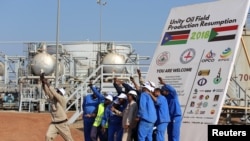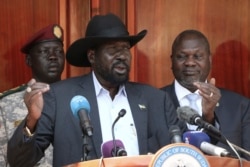South Sudan now has a transitional unity government and has returned to its original 10 states — but also has three new "administrative areas" that may generate friction between the president and the opposition.
In the run-up to last Saturday's formation of the new government, President Salva Kiir dissolved the 32 states he unilaterally created during the country's civil war. A return to 10 states was a key demand of opposition parties and Kiir's acceptance of that demand broke the impasse that had held up formation of a unity government for over a year.
In his decree, Kiir also created the three administrative areas without explaining their purpose. But it escaped nobody's notice that all three areas produce oil, which accounts for about 98% of South Sudan's export revenue.
Jane Kani Edward is a native of South Sudan who is now a clinical associate professor in Fordham University's African and African American Studies Department.
In her view, the administrative areas spell trouble for the new government.
"It has to do with land issues and the people who live in those areas. Maybe they don’t feel like being administered separately, particularly the Ruweng Administrative Area," Edward told VOA's South Sudan in Focus. "There are different communities who live there and they feel like, why do they have to be cut off [from Unity state]... That’s the major problem.”
Government and opposition forces clashed fiercely over the Ruweng area during the civil war because of its vast oil resources.
After Kiir unveiled the "10+3" map last week, opposition spokesman Poul Both Baluang, said "We welcome this decision but we only have one complaint: the establishment of Ruweng Administrative Area."
The other administrative areas are Pibor in the east and Abyei in the north, which is also claimed by Sudan.
Kiir has not said whether the three areas will have governors and ministers, like the 10 states, or if they will be run directly by the government in Juba.
Edward said she has no doubt any decisions will be dictated by one factor: oil.
"Most of the government officials are fixated on the oil industry in South Sudan because that’s the only source of income for the country, so that’s going to create a lot of problems," she says.








